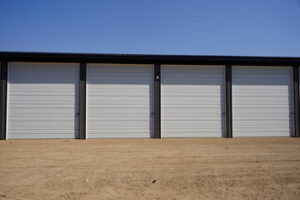Roof Repair Columbus GA, can be a big job and requires special care because it involves a very fragile surface above the ground. You should only work with a professional roofer!
A professional can handle surface repairs like replacing a missing shingle or patching small holes. However, it’s important to look for flashing problems like rust or leaking water as soon as possible.

Shingles are your roof’s primary defense against inclement weather, so damaged ones must be replaced quickly. Naked spots on the roof offer no barrier against rain and sun, and moisture can easily penetrate and damage the underlayers of the roof. This can lead to leaks, mold growth, and structural damage over time.
A quick inspection of your roof can tell you if there are any broken or missing shingles. You can spot these from the ground when you walk around your home, but climbing up onto the roof will give you a more complete view. Look for cracked or curled shingles, which signal that they are close to the end of their useful life and need replacement. Also, keep an eye out for granule loss, which is another sign that the shingle is deteriorating.
You can replace a damaged shingle by loosening the nails that hold it in place and sliding it free. To access the nails, slide a flat pry bar underneath the shingle just above it. This will break the glue seal that holds it to the shingle below. Then, slide the shingle you’re replacing to the right spot and nail it through its own adhesive strip.
If you’re not comfortable working on the roof or have a particularly steep roof, consider hiring a professional for this repair. In addition to helping you avoid the risks of falling, they can also help ensure that your repair job is done properly.
After replacing a damaged shingle, you should check the surrounding shingles to make sure that they’re in good shape. If you notice any cracks, rips or other signs of wear, you can use asphalt roofing cement to seal the area and prevent further damage.
While you’re on the roof, check for deteriorating flashing as well. Flashing acts as a sealant to keep water from seeping into your home through joints in the roof, and it’s vital for protecting the integrity of your roof. Air conditioning ducts, chimneys and other protrusions often require their own flashing to protect them from the shingles, but you can also install flashing at any weak points in your roof.
Rusty Flashing
Flashing is an important part of your roof, providing a seal at the points where it meets other roofing materials or protrusions like chimneys. But it can also be vulnerable to damage from extreme weather. For example, metal flashing can rust or degrade if it’s exposed to moisture over extended periods. This can compromise its ability to protect other parts of the roof and your home’s interior from water penetration.
A small amount of rust or corrosion may not cause a problem, but it should be repaired as soon as possible. If the rust or corrosion continues, it can cause leaks and other damage. To prevent further deterioration, check flashing regularly for damage or rust. Make this a regular part of your annual roof inspection (preferably in late autumn).
When you spot any signs of rust or corrosion, it’s essential to take action promptly. This may involve removing the affected section and replacing it with new flashing, or cleaning and priming the existing flashing before applying a fresh coat of paint. For best results, use aluminum paint that’s formulated to adhere and mimic the appearance of galvanized flashing.
For more extensive damage, you may need to replace the flashing. This can be a challenging task that requires professional training and tools to get the job done safely. The process involves working at heights, and it’s important to wear proper safety equipment, including a harness and a ladder that is secure on the ground. You’ll also need to have access to a pair of scissors, a ladder extender, a caulking gun, roofing cement, and roofing nails.
If you notice water stains on your walls or ceilings, this is an indication that the flashing has become damaged. This could be caused by the expansion and contraction of the metal during drastic temperature changes, which can cause the flashing to become warped or cracked, allowing water to enter your home.
To fix this, you’ll need to remove the existing flashing and clean the area. If the flashing is still intact, you can apply a thin layer of roof cement over any cracks or gaps to create a seal and protect the rest of your roof. If you need to replace the flashing, choose a material that’s compatible with your current roofing system and install it with care.
Moss and Mildew
Moss grows in areas that receive little sunlight and are often cool and damp. It’s not harmful when it grows on tree bases or rocks around your home, but it can develop into a major problem when it invades the roof. As it grows, moss absorbs water and retains it like a sponge. This constant moisture can lead to shingle degradation and create a habitat for organisms that can break down the wood structures of your roof. Moss also interferes with proper drainage of rain and melting snow, which can clog gutters and cause leaks inside your home.
It’s possible to get rid of moss on a roof by scraping or brushing, although this may damage the shingles and should be done only in areas that aren’t already damaged. A more effective way to remove moss is to use a commercial product available at most hardware stores. Most of these pre-mixed cleaners come with a hose attachment and are sprayed onto the roof. When using a liquid solution, work in small sections, as it’s easy to lose track of your progress and leave parts of the roof untreated. You can also make a homemade cleaning solution by mixing equal parts of baking soda and citrus oil-based products. This mixture alters the pH of the environment and makes it unsuitable for moss, but be sure to test it on a small section of the roof before applying it to the entire surface.
If you’re not comfortable working on your roof, you can still have a professional inspect it and recommend the best course of action. In addition to repairing damaged shingles and preventing leaks, regular roof inspections can detect other problems before they become serious.
It’s important to have a well-functioning, durable roof that can protect your home from the elements and protect its value. Invest in regular repairs, and your roof should last for the lifetime of your house. For more information, contact a roofing expert near you. They can assess your roof and give you a quote for any necessary repairs.
Water Leaks
A leaking roof can cause water damage throughout your home. This can include wet carpets, warped ceilings, and damaged woodwork. It can also lead to mold growth and other health problems. Water leaks can be caused by poor building upkeep, damaged tiles and flashing, or simply wear and tear over time. Regardless of the cause, it’s important to fix it quickly and efficiently to avoid long-term structural issues and other costly repairs.
Fortunately, many of the factors that contribute to roof leaks are preventable. Here are some of the most common causes:
People: People can cause a number of roof leaks by walking on the roof without proper shoes and by using tools or equipment on the surface. These actions can cause rips and cuts that leave the roof vulnerable to water intrusion. It’s also important to protect your roof with walk pads, especially when installing rooftop equipment.
Issues with Seams: When the seams of your roof are not properly sealed, water can seep into the roofing system. This can happen from the edges of the roof or at the corners. Sealants should be applied regularly to keep the seams watertight.
Poorly Installed or Damaged Flashing
Flashing is a metal material that’s used to seal the joints in your roof and around chimneys, vents, and skylights. It’s essential to install it correctly and secure it tightly to prevent water leaks. However, flashing can become corroded or damaged from the elements and may require repair or replacement over time.
Valley Leaks
A leaky roof valley is a major problem that can be difficult to detect and expensive to repair. A valley repair requires removing the shingles and flashing from the affected area, as well as the adjoining shingle row. Special care is taken to ensure that the new shingle and flashing are integrated with each other. The process is even more complicated for roofs with stucco or brick walls, as the new flashing must be embedded into the wall and carefully aligned with the roofing materials.
A sagging bulge in your ceiling is usually a sign that there’s a roof leak. If left untreated, the sagging can lead to severe structural damage. It’s a good idea to poke an opening in the sagging bulge with a screwdriver or knife to release the build-up of water that’s causing the damage.








